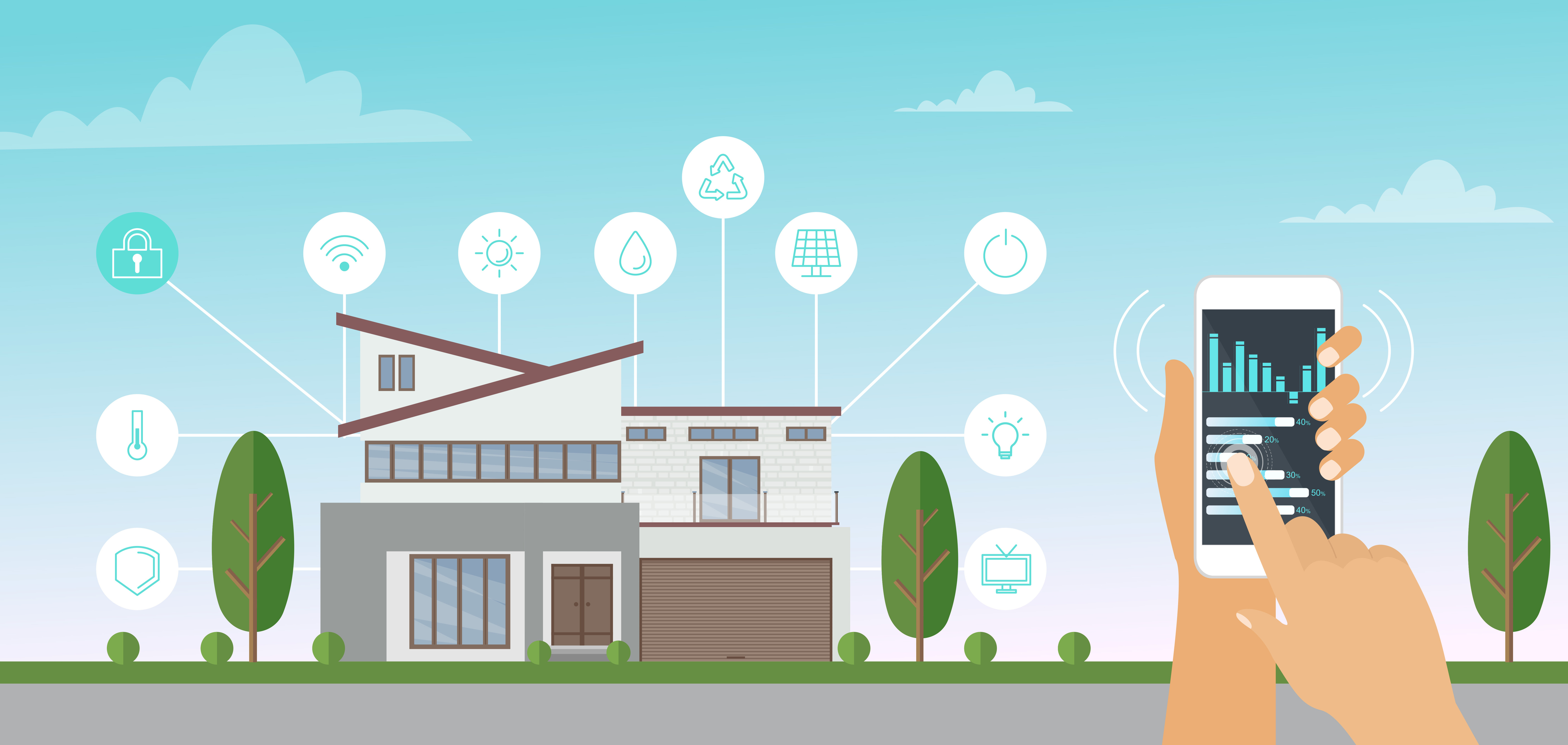This blog post was originally published at Digica’s website. It is reprinted here with the permission of Digica.
As smart home technology continues to evolve, our homes are becoming equipped with an increasing number of sensors, each capable of generating valuable data. From security systems and motion detectors to monitoring electricity and water usage, these sensors provide a wealth of information that can be integrated and analysed to enhance our daily lives. In this article, we’ll explore the different types of sensors commonly found in smart homes and discuss the potential benefits of leveraging the data that they produce. We will make sure that your home is actually smart, not just annoying. Get ready to unlock the true potential of your smart home as we delve into the possibilities that lie within these inconspicuous devices and the data that they collect.
What is IoT for?
When it comes to smart homes, a wide range of sensors can be employed to monitor various aspects of our living environment. Let’s take a closer look at some of the key types of devices commonly found in smart homes:
- Security: These devices include sensors for detecting unauthorised entry, such as motion detectors, closed window/door sensors and broken glass sensors. They help to ensure safety in your home and to alert you in case of any potential threats.
- Energy/Resources Management: These sensors focus on optimising energy and resource usage in your home. They monitor factors such as temperature, electricity usage and water usage, which provides insights to help you reduce waste and save money.
- User Experience: This group of devices enhances the convenience and control that you can have over your smart home. With remote control capabilities, you can easily manage and operate appliances from anywhere, and receive additional information or notifications related to your home.

What to do with all that data?
With all the data generated by these sensors, you may wonder what exactly you can do with it. Well, the sky is the limit! Or rather, computing power is the true limit. Most useful cases usually include detection of behaviour patterns. Here are some ways that you can leverage the data from your smart home sensors:
- Anomaly Detection: By analysing data collected over time, smart home systems can detect patterns in your daily routines. This enables the system to anticipate your needs and preferences, which makes it possible either to provide a personalised and tailored experience or to detect deviations from the norm. If a sensor notices something out of the ordinary, it can immediately alert you with a warning such as:
“Your washing machine is using 10% more power than usual, we recommend a maintenance effort.”
“Most probably you have a small leak in the basement.”
- Non-invasive Monitoring Alerts: Smart home systems can also provide insights into the activities of your household members without obtrusive devices like cameras or sound recording. It can be especially useful for monitoring the elderly at those times when we cannot be close to the ones we care about.
“Your grandma left the door open for longer than usual.”
“Your grandpa did not turn off the alarm this morning.”
- Optimization Suggestions: By leveraging the data from smart home sensors, the system can offer suggestions about how to optimise your daily routines and resource usage.
“You leave your house for 8h every morning, so how about decreasing the temperature setting by 4 degrees for that time?”
“You would probably water your roses today, but bear in mind that rain is forecast for this evening.”
- Predictive Maintenance: By continuously monitoring the performance of devices in your smart home the system can predict potential failures or maintenance needs.
“Your router is about to fail in the next 4h, so please reboot to avoid problems.”
What can go wrong?
While smart home sensors offer incredible benefits, it’s important to be aware of potential challenges that can arise. Understanding these obstacles will help you to mitigate them effectively and ensure a smooth and reliable smart home experience. Here are some common challenges and important aspects to consider when analysing data from your IoT system and detecting patterns:
- Noise in the signal can lead to inaccurate measurements and false readings. Physical conditions, such as damage or environmental factors, may introduce noise into the sensor data. For example different light/temperature of the sensor surrounding can require different calibration settings.
- Connectivity problems can hinder the seamless operation of your smart home devices. Radio or Wi-Fi interference due to other devices in the neighbourhood, thick walls, distant transmitters and receivers can all contribute to delayed or lost data.
- Power outages can disrupt the functioning of your IoT devices, leading to data gaps and potential downtime.
- Users play a significant role in the proper functioning of smart home systems. Incorrect installation, reinstallation or usage not aligned with recommendations can introduce errors or inconsistencies in the data. Never assume that something is impossible just because it does not make sense. People, especially children are “creative” in how they treat technology.
What to look after?
IoT devices can be smart, but are only as smart as you let them be. There are few important aspects of the IoT system that you should consider when designing or installing the system in your smart home:
- Sensor Location: Carefully consider the placement of your sensors to ensure optimal data collection. Take into account factors such as proximity to the monitored area and accessibility for maintenance. It’s essential to strike a balance between data accuracy and user convenience when determining the sensor locations. One motion sensor in the bedroom will probably not provide you with meaningful information about users’ activity during the day.
- Energy Sources: Based on the sensor locations, consider the energy constraints that may arise. Some sensors may rely on battery power, which requires periodic replacement or recharging and can limit the computing and/or transmitting possibilities of the device. Evaluate the power requirements of your devices and plan accordingly to ensure consistent and uninterrupted data collection. Consider implementing backup power solutions, such as battery backups or uninterruptible power supplies (UPS)in order to maintain continuous operation during electricity supply disruptions.
- Fault-Tolerant: It’s crucial to have a fail-safe mechanism in place to address faulty IoT devices. Incorporate a “turn off” button or alternative methods to deactivate malfunctioning sensors. You don’t want the user to be locked in their house or have no access to power or water if something goes wrong with your system.
- User-Friendly Defaults: Recognize that users may not always customise settings to their fullest extent. To mitigate potential issues stemming from user negligence or lack of technical expertise, set sensible defaults that align with recommended usage patterns. This ensures that, even if users don’t actively configure their devices, they still benefit from optimised and efficient operations.
- Integration Capabilities: One sensor alone may not provide a comprehensive understanding of your smart home environment. Consider the integration capabilities of your sensors and explore how they can communicate and share data with each other. A cohesive network of sensors can provide a holistic view of your home and therfore enable more accurate analysis and insights. This is where the magic of the IoT happens.
Smart devices offer a great deal of possibilities, but such devices are also vulnerable to an extent and have certain limitations. Keep that in mind and don’t let your home outsmart you.
Karolina Warycha
Data Scientist, Digica


